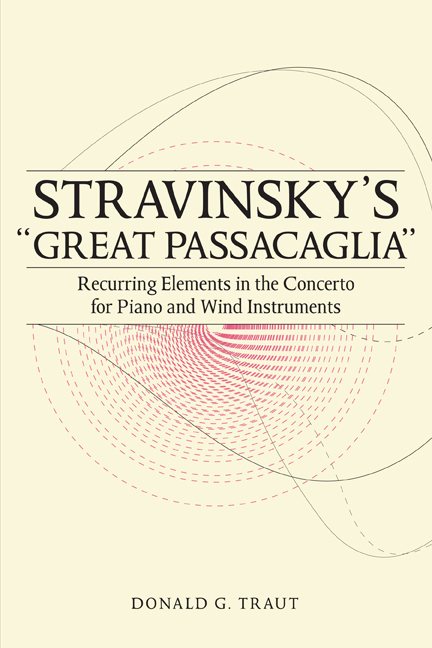Book contents
- Frontmatter
- Dedication
- Contents
- Acknowledgments
- Introduction
- 1 Context and Composition
- 2 Concerto as Catalyst
- 3 Analytical Tools and Recurring Elements
- 4 Counterpoint and Tonality in the First Movement
- 5 Tetrachords and Tritones in the Largo
- 6 Points of Imitation in the Finale
- Conclusion
- Appendix
- Notes
- Bibliography
- Index
5 - Tetrachords and Tritones in the Largo
Published online by Cambridge University Press: 12 August 2020
- Frontmatter
- Dedication
- Contents
- Acknowledgments
- Introduction
- 1 Context and Composition
- 2 Concerto as Catalyst
- 3 Analytical Tools and Recurring Elements
- 4 Counterpoint and Tonality in the First Movement
- 5 Tetrachords and Tritones in the Largo
- 6 Points of Imitation in the Finale
- Conclusion
- Appendix
- Notes
- Bibliography
- Index
Summary
In the previous chapter, we saw how materials derived from REs 1 and 4 helped form a vibrant first movement Allegro. The REs reflected the Baroque influence of the movement, which manifested itself in motives, rhythms, and textures reminiscent of keyboard sinfonia and other earlier genres. Harmonically, displacement of the resultant contrapuntal lines disguised underlying tonal models that in many cases mimicked tonal practice quite closely. The addition of a framing slow introduction and coda, along with a jazzy and virtuosic cadenza, made the movement an impressive opening statement to a neoclassic take on the Baroque concerto.
In the second movement, Stravinsky needed to accomplish a much different task. He needed to compose an extended and coherent movement with an uncharacteristically slow tempo and strong melodic content. To accomplish this, he adopted a five-part layout as shown in figure 5.1. The movement’s opening section (A) begins with a piano solo section (mm. 1–10), which gives way to a tutti section stressing the primary theme (mm. 10–18), derived from RE 2. After a short transition (mm. 23–27), the first of two cadenzas (mm. 27–43) provides some much-needed contrast, not only from the steady opening part of the Largo, but from the relentless motor rhythms of the first movement. These measures represent some of Stravinsky's most stylistically Romantic writing, even incorporating a bit of rubato. The first cadenza leads to a middle section (B) marked Più mosso (mm. 44–85). This folk-like section sounds simple and serene, but as is shown here, the writing has its complexities. The horn reasserts itself in the latter part of this section, carrying a strong and lyrical melody that eventually gives way to a second cadenza (mm. 85–94). Finally, a return to the opening texture marks the coming end of the movement (Aʹ), this time with the A–G–F–E melody in full control (mm. 95–end).
Despite the relatively straightforward nature of this formal plan and the movement's content overall, several authors have found the organization and materials to be lacking. Robert Craft sees in the Largo an overcompensation for the “metronomic rigidity” of the opening Allegro, resulting in a “patchwork” of a slow movement, where Stravinsky is “less than certain” and “lumbering.”
- Type
- Chapter
- Information
- Stravinsky s "Great Passacaglia"Recurring Elements in the Concerto for Piano and Wind Instruments, pp. 95 - 110Publisher: Boydell & BrewerPrint publication year: 2016



